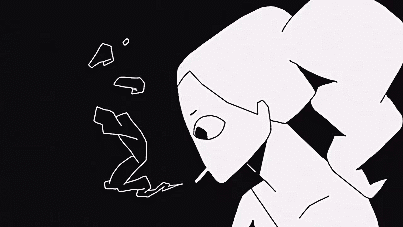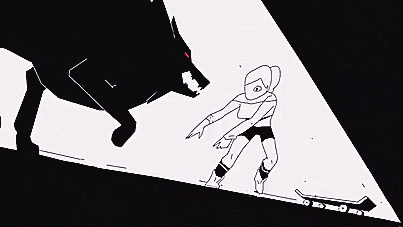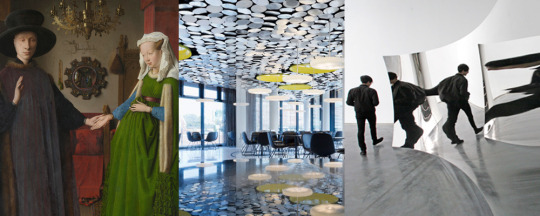How Do You Like Your Turkey? Home-Cooked Or Rocket-Launched?
How Do You Like Your Turkey? Home-Cooked or Rocket-Launched?

It’s Thanksgiving, which means that you’re probably thinking about food right now. And here at NASA, we have to think about food very seriously when we explore space!
Astronauts Need to Eat, Too!
Like for you on Earth, nutrition plays a key role in maintaining the health and optimal performance of the astronauts. The Space Food Systems team is required to meet the nutritional needs of each crew member while adhering to the requirements of limited storage space, limited preparation options, and the difficulties of eating without gravity.
Good food is necessary being comfortable on a mission a long way from home — especially for crewmembers who are on board for many months at a time. It’s important that the astronauts like the food they’re eating everyday, even given the preparation constraints!
Astronaut Food Has Not Always Been Appetizing

The early space programs were groundbreaking in a lot of ways — but not when it came to food. Like today, crumbs had to be prevented from scattering in microgravity and interfering with the instruments. Mercury astronauts had to endure bite-sized cubes, freeze-dried powders, and semi-liquids stuffed into aluminum tubes. The freeze-dried food were hard to rehydrate, squeezing the tubes was understandable unappetizing, and the food was generally considered to be, like spaceflight, a test of endurance.
However, over the years, packaging improved, which in turn enhanced food quality and choices. The Apollo astronauts were the first to have hot water, which made rehydrating foods easier and improved the food’s taste. And even the Space Shuttle astronauts had opportunities to design their own menus and choose foods commercially available on grocery store shelves.
The Wonders of Modern Space Food

Nowadays, astronauts on the International Space Station have the opportunity to sample a variety of foods and beverages prepared by the Space Food Systems team and decide which ones they prefer. They can add water to rehydratable products or eat products that are ready to eat off the shelf.
All the cooking and preparation has been done for them ahead of time because 1) they don’t have room for a kitchen to cook on the space station 2) they don’t have time to cook! The crewmembers are extremely occupied with station maintenance as well as scientific research on board, so meal times have to be streamlined as much as possible.
Instead of going grocery shopping, bulk overwrap bags (BOBs!) are packed into cargo transfer bags for delivery to the space station. Meal based packaging allows the astronauts to have entrees, side dishes, snacks, and desserts to choose from.
Taste in Space

The perception of taste changes in space. In microgravity, astronauts experience a fluid shift in their bodies, so the sensation is similar to eating with a headcold. The taste is muted so crewmembers prefer spicy foods or food with condiments to enhance the flavor.
We Can’t Buy Groceries, But We Can Grow Food!
Growing plants aboard the space station provides a unique opportunity to study how plants adapt to microgravity. Plants may serve as a food source for long term missions, so it’s critical to understand how spaceflight affects plant growth. Plus, having fresh food available in space can have a positive impact on astronauts’ moods!
Since 2002, the Lada greenhouse has been used to perform almost continuous plant growth experiments on the station. We have grown a vast variety of plants, including thale cress, swiss chard, cabbage, lettuce, and mizuna.

And in 2015, Expedition 44 members became the first American astronauts to eat plants grown in space when they munched on their harvest of Red Romaine.
Earthlings Can Eat Space Food, Too
To give you a clear idea of how diverse the selection is for astronauts on board the space station, two earthlings gave the astronaut menu a try for a full week. Besides mentioning once that hot sauce was needed, they fared pretty well! (The shrimp cocktail was a favorite.)
Space Technology for Food on Earth
Not only has our space food improved, but so has our ability measure food production on Earth. Weather that is too dry, too wet, too hot, or too cool can strongly affect a farmer’s ability to grow crops. We collaborated with the United States Agency for International Development to create a system for crop yield prediction based on satellite data: the GEOGLAM Crop Monitor for Early Warning.

This map measures the health, or “greenness” of vegetation based on how much red or near-infrared light the leaves reflect. Healthy vegetation reflects more infrared light and less visible light than stressed vegetation. As you can see from the map, a severe drought spread across southern Mexico to Panama in June to August of this year.
The Crop Monitor compiles different types of crop condition indicators — such as temperature, precipitation, and soil moisture — and shares them with 14 national and international partners to inform relief efforts.
Thanksgiving in Space
Space food has certainly come a long way from semi-liquids squeezed into aluminum tubes! This year, Expedition 57 crewmembers Commander Alexander Gerst and Flight Engineer Serena M. Auñón-Chancellor are looking forward to enjoying a Thanksgiving meal that probably sounds pretty familiar to you: turkey, stuffing, candied yams, and even spicy pound cakes!
Hungry for More?
If you can’t get enough of space food, tune into this episode of “Houston, We Have a Podcast” and explore the delicious science of astronaut mealtime with Takiyah Sirmons.
And whether you’re eating like a king or an astronaut, we wish everybody a happy and safe Thanksgiving!
More Posts from Heyitsmaye and Others
For some reason, I had never bothered to research the history of my little blue inhaler, and I can’t believe how many models there have been.
From steam tents to cigarettes, from coffee to formulas that contain 3.5% cocaine, treatments and asthmatic equipment has come such a long way.
My dad once told me that back when he was a kid, the area where he grew up did not fully understand the cause of asthma, and believed that he was faking his attacks. He told me that his doctor would tell him that asthma was caused by ‘stale air’ in the lungs and that he needed to get rid of the air by lying to the side and patting the side of his ribs.


Douceur
An analysis of how words and emotion affect the molecular crystalized structure of water
Also shows the structure of polluted water after being blessed and how it is similar to the structure of water exposed to positive energy, but before it was similar to the structure of that of water exposed to negative energy

· Music shows that listening to music can reduce anxiety, blood pressure, pain
· Improves sleep quality, mood mental alertness and memory
· Johns Hopkins researchers had jazz performers and rappers improv music while lying inside an fMRI machine and studied their brains
Not specific more generic










Siamés - “The Wolf”
Past projects? Similar concepts?
During specialism, I have explored the concept of healing by sharing my experience in hospital due to having frequent asthma attacks in the Radio project. I found the medium of sound very effective when telling my experience as there are so many sounds relating to the hospital and sickness in general. There is also the unmistakable inhaler sound that is very specific to asthma. I wish to build upon this project during FMP by interviewing my parents not only because I cannot recall most of what happened, but also gives an insight into what it was like from their perspective.
Although I had difficulty with it at first, I wish to utilise stop motion animation in my FMP because it creates the more character and materiality than digital animation. I feel like digital animation would suit the more impersonal areas, where as the materiality is needed to create more personal details.
I wish to also somehow incorporate rubber stamping as again, it’s material nature would lend itself quite well in the subject.
Healing: Introduction and intentions
The area subject ‘Healing’ intrigues me as it is something that every live being must go through, whether it be emotionally, mentally or physically. Healing can be regarded in many ways for example the process of returning back to a healthy state in a relationship or physically healing.
Healing in a medical sense has seen such a rapid progression in the last decade, due to so many pivotal inventions, such as recombinant DNA. This discovery not only helped to massively project the development of medicine that is used today, but also helped to solve crimes that were either left cold years ago due to lack of evidence, or free those who served jail time for a crime they did not commit.
Furthermore, the history of medicine intrigue me as it shows how far healing has come and could also inspire future methods. It is also interesting how the philosophy of a certain region at a particular point in time influenced their medical practices. For instance in the middle ages; a time of limited scientific understanding and when people placed their hopes and faith in the supernatural, came up with gory treatments such as whipping themselves in order to earn God’s forgiveness.
I would like to further research more alternative practices of medicine and compare this with modern medicine. Although it is what is most commonly used, modern medicine may not be the best route to recovery, due to the amount of side effects that are displayed. It could also be argued that most modern treatments are just quick and easy short term cures that force you to keep buying from the same supply. From the knowledge I have gathered of those in my family who have invested in Chinese medicine, although the results are not immediate they are long term due to each dose being altered according to the changes in your daily metabolic state.
I first became intrigued in wanting to further research healing after discovering Dr Emoto’s studies on how emotions influence the molecular structure of crystalized water molecules, proving the existence of human vibrational energy. Although some may believe this to be pseudoscience and that his studies conclude to nothing of importance, I believe that his studies at the least promote the idea of self-healing through manifesting positive energy towards yourself. I also found the dismissiveness of western articles writing about Dr Emoto’s theory interesting, as it reveals how despite not fully understanding the science and dedication behind his studies, they were so quick to label his findings as ‘pseudoscience’ as it did not corelate with the western ideology of science. During FMP I intend to further learn about Dr Emoto’s through reading his books ‘Hidden messages in water’ and ‘The true power of water’ as well as collecting research from other sources in order to come to my own conclusion in regards to the subject.
I also intend to gather information about the therapeutic benefits of music. Throughout the ages music has been a presence in the healing world from Native American throat singing to now being used to provide emotional and behavioural benefits to those with Alzheimer’s disease and types of dementia. This is possible due to the key receptors in the brain which are linked to music, are located to a different area of the brain effected by the disease. It has also been researched that listening to music improves the immune system by promoting the development of the antibody, immunoglobulin A which kills unhealthy or defective cells.
Mental and emotional healing after experiencing grief, a rough relationship, a traumatic experience or addiction is so personal, therefore it is important to research this in a way that respects the individual’s story and their route to recovery. At this point, I am not sure how to approach this subject as I don’t want to generalise an individual’s experience or make them feel invalidated.
I can certainly relate to the medicinal aspect of healing having spent half of my childhood in hospital. However despite me being the one lying on the hospital bed, I honestly didn’t have care in the world because I didn’t fully understand what was happening, whereas my parents and family did and now I know that seeing me like that was probably scarier than for them than it was for me at the time. In every healing, there is always a type of support system that aids in the individual’s recovery, for me it was the nurses and my family, for others it may be different.

-
 lellowberry liked this · 2 weeks ago
lellowberry liked this · 2 weeks ago -
 a-ya-92 liked this · 2 weeks ago
a-ya-92 liked this · 2 weeks ago -
 knightlyqueen liked this · 2 weeks ago
knightlyqueen liked this · 2 weeks ago -
 takingback-thepenguin liked this · 2 weeks ago
takingback-thepenguin liked this · 2 weeks ago -
 gemmahale liked this · 2 weeks ago
gemmahale liked this · 2 weeks ago -
 lyrslair reblogged this · 2 weeks ago
lyrslair reblogged this · 2 weeks ago -
 captaindibbzy reblogged this · 2 weeks ago
captaindibbzy reblogged this · 2 weeks ago -
 cr0wsvain reblogged this · 3 weeks ago
cr0wsvain reblogged this · 3 weeks ago -
 antagonisttendencies reblogged this · 3 weeks ago
antagonisttendencies reblogged this · 3 weeks ago -
 riot2011frontlines liked this · 1 year ago
riot2011frontlines liked this · 1 year ago -
 recallthelovelywords liked this · 1 year ago
recallthelovelywords liked this · 1 year ago -
 jennrg reblogged this · 3 years ago
jennrg reblogged this · 3 years ago -
 tea-and-vodka liked this · 3 years ago
tea-and-vodka liked this · 3 years ago -
 justatheatrekidwholovesspace liked this · 4 years ago
justatheatrekidwholovesspace liked this · 4 years ago -
 deliciouslymaximumbluebird liked this · 4 years ago
deliciouslymaximumbluebird liked this · 4 years ago -
 heyitsmaye reblogged this · 4 years ago
heyitsmaye reblogged this · 4 years ago -
 liptonrm reblogged this · 4 years ago
liptonrm reblogged this · 4 years ago -
 hityouwithmydrumsticks reblogged this · 4 years ago
hityouwithmydrumsticks reblogged this · 4 years ago -
 acrazyinkling liked this · 4 years ago
acrazyinkling liked this · 4 years ago -
 i-am-me-and-you-are-not reblogged this · 4 years ago
i-am-me-and-you-are-not reblogged this · 4 years ago -
 i-am-me-and-you-are-not liked this · 4 years ago
i-am-me-and-you-are-not liked this · 4 years ago -
 elmo75 liked this · 4 years ago
elmo75 liked this · 4 years ago -
 mathbirb liked this · 4 years ago
mathbirb liked this · 4 years ago -
 citrono-kirbo reblogged this · 4 years ago
citrono-kirbo reblogged this · 4 years ago -
 fuckyeahcelestialthings reblogged this · 4 years ago
fuckyeahcelestialthings reblogged this · 4 years ago -
 aguapuracon liked this · 4 years ago
aguapuracon liked this · 4 years ago -
 jkslovepeace liked this · 4 years ago
jkslovepeace liked this · 4 years ago -
 maskedohmie liked this · 4 years ago
maskedohmie liked this · 4 years ago -
 erutnevdahewnref liked this · 5 years ago
erutnevdahewnref liked this · 5 years ago -
 kristijenner19 liked this · 5 years ago
kristijenner19 liked this · 5 years ago -
 murciegalito liked this · 5 years ago
murciegalito liked this · 5 years ago -
 d-ecen-t liked this · 5 years ago
d-ecen-t liked this · 5 years ago -
 syoblueberry liked this · 5 years ago
syoblueberry liked this · 5 years ago -
 gerhard140 liked this · 5 years ago
gerhard140 liked this · 5 years ago -
 selfaseathics reblogged this · 5 years ago
selfaseathics reblogged this · 5 years ago -
 jaminamining liked this · 5 years ago
jaminamining liked this · 5 years ago